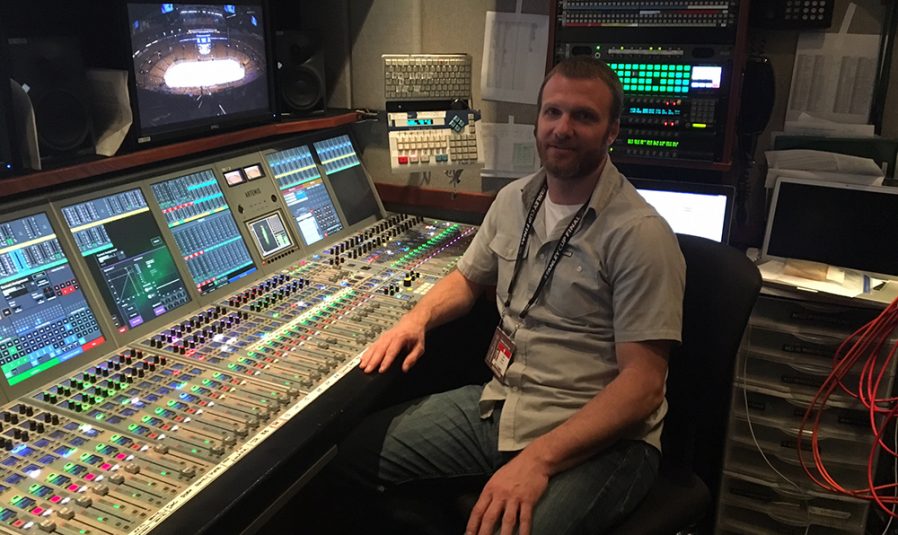Live From the Stanley Cup Final: The A1 for NBCSN’s Broadcast Audio Is a One-Man Band
Ice and crowd sounds, announcer audio, some studio shows are mixed by one person
Story Highlights
Sound for NBCSN’s coverage of the Stanley Cup Final reflects what you’d expect from an arena hockey game: loud crowds — in this case, bolstered by an especially exuberant Nashville Predators home audience — and lots of high-frequency ice sound punctuated by the more-than-occasional body-slam thump into the dasher boards. What’s surprising is that all of that, plus announcer audio and some of the indoor and outdoor studio shows around the games, is being mixed by one person.
A1 Tim Dunn has mixed hockey in the Bridgestone Arena before — for regular-season games and last year’s All-Star Game, which was played in Nashville — and knows the city’s and the venue’s reputation for noise. “I was really prepared to get my hair blown back from the volume,” he says from the audio compartment of NEP’s ND6 remote unit. “I struggled a little bit to get it all dialed in right in the first half of the first period, but, after that, it was fine.”

NBC Sports A1 Tim Dunn manned that Calrec Artemis console aboard NEP’s ND6 during games at Bridgestone Arena.
This year’s Stanley Cup Final is Dunn’s fourth for the network, and he has mixed previous ones for other networks. “No two [arenas] are the same, and they can change from day to day, so it’s pretty much a game-by-game challenge,” says Dunn, who’ll also be an A1 for NBC Sports Olympics in PyeongChang, Korea, next year. “The volume in Pittsburgh was pretty manageable, and we didn’t feel overwhelmed by the crowd or the PA. We prepare as well as we can,” he adds. “We communicate with the league and the building’s people. and we give each other what we think we need.”
The decision to have one person mix the entire game was made several years ago, he explains. It was based at least in part on economics and efficiency, though not at the expense of effectiveness. “It’s a lot to manage, but it’s the same way we do it all season, and I’m comfortable doing it,” he points out, adding that, although the live action is mixed in 5.1, more of the production elements are now also being produced in surround, creating a more consistent-sounding show. “This is my fourth Stanley Cup for NBC, and I’ve never used a submixer for hockey.”
Dunn, working from NEP’s ND6 in Nashville and ND5 in Pittsburgh, swears he has no special secrets to making hockey sound good on television, but a more-is-less philosophy is definitely at work. “Just putting the right mic in the right place” is enough, he says. “I’m just bringing out what’s happening on the ice: the skates and sticks and the hits.”
The Nashville shows are particularly suited to that approach: the city’s first brush with postseason hockey seems to have stimulated a genuine reaction that’s coming through the many transducers around the rink.
“There’s something unique in the crowd environment,” says Dunn. “It’s authentic, it’s organic. It’s loud, but it’s not being driven by the PA system. The PA is loud, but that’s not what’s driving the crowd noise. A lot of them are new to hockey, and they’re being swept up in it. What you’re hearing is very real.”
